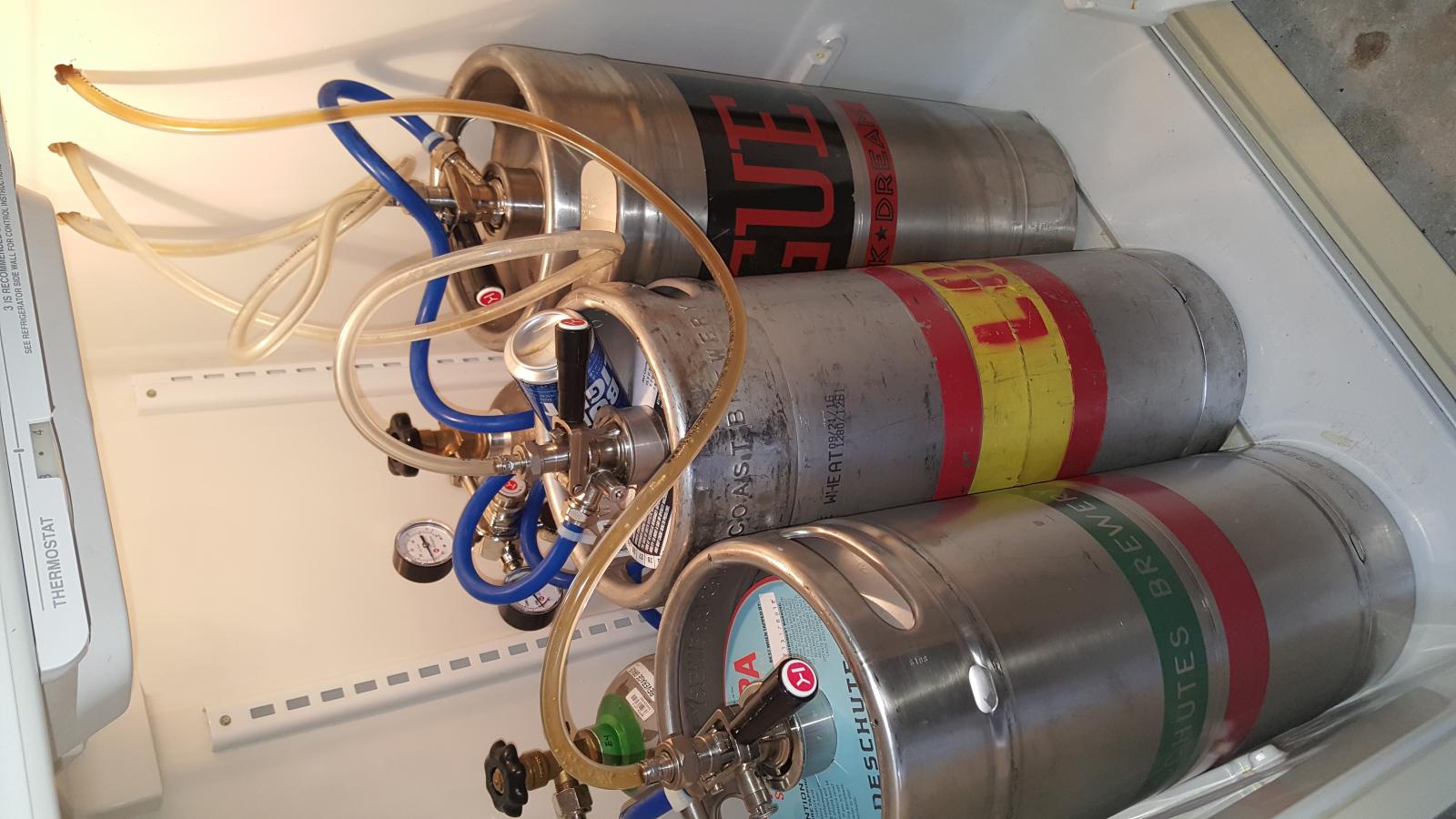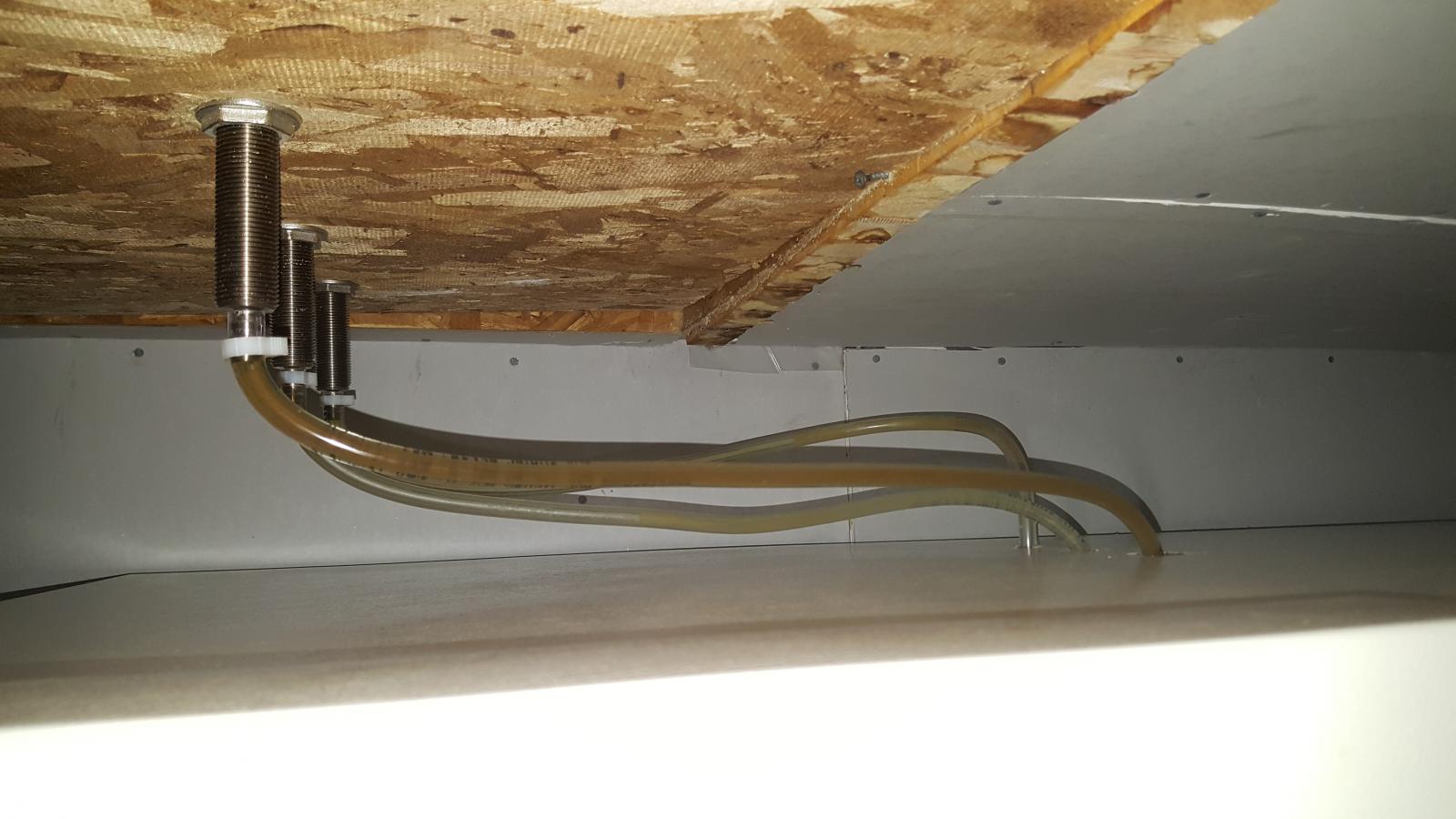Assuming the area where the lines coming out of the refrigerator is protected (i.e., not exposed to the outside directly), I think Plexvector's idea would work. It's what I'd do.
One light below the exposed lines outside the refrigerator, one inside. I'd do about a 40-watt inside the fridge, and maybe a 60-watt under the outside lines. Heat rising from the 60-watt would warm the lines. A 40-watt bulb would be enough heat inside the insulated refrigerator to keep ambient in there at a reasonable level. If for some reason that didn't work, you could go to 60 or even 100 watt bulbs, but I'll bet a 40 would work.
Of course, if you have a thermometer, put it in there and see what you get.
[I have a fermchamber fridge in my garage; had a 21-watt heat mat wrapped around a keg to keep it at 66 degrees; even when the garage was below 40 degrees, it had no problem keeping that keg at 66.]
I have a sink in my garage; the garage is insulated but not heated. Even during the coldest periods it rarely drops below 32 degrees (believe it or not, the cars shed heat and that helps keep it fairly temperate in there). When it's getting pretty cold, I just put a trouble light inside the cabinet below the sink, w/ a 60 degree bulb. That keeps the lines above freezing.
The light bulb idea is probably the most elegant one.



































![Craft A Brew - Safale S-04 Dry Yeast - Fermentis - English Ale Dry Yeast - For English and American Ales and Hard Apple Ciders - Ingredients for Home Brewing - Beer Making Supplies - [1 Pack]](https://m.media-amazon.com/images/I/41fVGNh6JfL._SL500_.jpg)
























